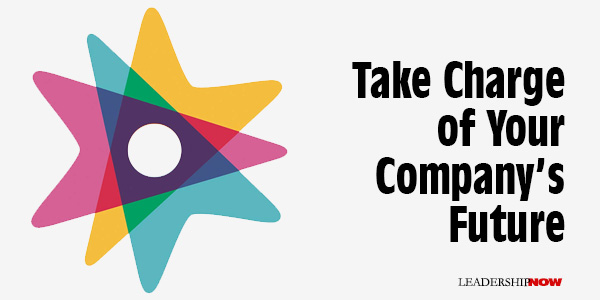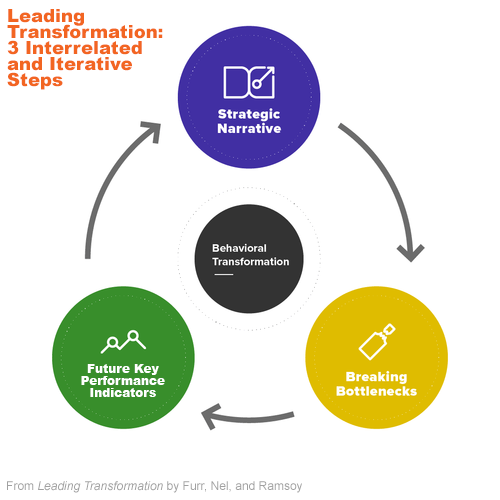 |
 |
11.09.18

Take Charge of Your Company’s Future
H The fundamental problem we face say the authors of Leading Transformation—Nathan Furr, Kyle Nel, and Thomas Zoega Ramsoy—is our tendency toward incremental thinking. That is “to see and act on what is nearby, easy to access, and familiar than what is possible.” We can’t eliminate our biases, but the authors suggest that to minimize them we take a three-step approach to behavioral transformation in your organization (and life). First, create a strategic narrative about a possible future, second break the decision bottlenecks, and third use key performance indicators—an artifact trail—to create signposts for the road ahead. The authors have a section devoted to each of these, but we’ll touch on them briefly:  Strategic Narrative We all know stories engage people, but most companies don’t have a meaningful story or if they do, they don’t use it well. The stories you create must be true narratives through the eyes of one person: a story with a narrative arc, characters a conflict, and a resolution. “Narrative works, in part, because it helps us suspend our disbelief and because it creates emotion, belief, and change.” When it comes to seeing possibilities, science fiction writers have an edge. They urge us to use science fiction writers to write stories of possible futures in your industry. And then present them in comic book format. “Science fiction can be a tool to break the bonds of incrementalism and to imagine other possibilities. The creative genre can help us dream bigger. They provide examples of how science fiction stories help companies do just that. (Science Fiction: This 1975 video interview with Gerald O’Neill and Isaac Asimov about a manufactured habitat in space inspired Jeff Bezos’ Blue Origin company.) Breaking Bottlenecks Creating the story, finding science fiction writers and graphic artists may be the easy part. “Navigating the rat’s nest of motivations, politics., and routines in any big company may be the hardest part.” Applying tools rooted in behavioral science like decision maps and archetypes can help to break bottlenecks. Archetypes can help you understand how to approach the decision makers in your organization. In one example, the legal team was holding up progress out of a desire to protect the company. In the example, Natalie reframed the proposal in a way that the caretaker archetype could appreciate. She suggested the moving forward would help to protect the company in the long run by keeping it relevant. Navigating the Unknown When we are entering new territory we have few markers to guide us. Most of the ongoing metrics we use are design to access past performance and are little help in judging an uncertain future. So it’s important to create key performance indicators to demonstrate that you are heading in the right direction. “Specifically, we start be identifying the end goal, then work backward to define an artifact trail—the series of small, observable activities and prototypes than can act as small wins to keep enthusiasm high.” Approach the project as an experiment. There is a brief discussion of the need for negative capability. It is being able to press on while not knowing. The term was coined by poet John Keats who said that “The concept of Negative Capability is the ability to contemplate the world without the desire to try and reconcile contradictory aspects or fit it into closed and rational systems.” We need to be comfortable with uncertainty. “To be a visionary—to take leaps—you need to develop this negative capability. Whereas many people cannot stand the fuzziness of uncertainty, leaders of innovation and transformation frequently demonstrate negative capabilities. The negative capabilities facilitate the exploration of new terrain and the discovery of the adjacent possible.” The most important step in taking charge of your company’s future is to begin. Take action to create the future you desire. “Creating a narrative to set a vision, identifying a small experiment you could run to build confidence, or seeking out uncommon partners for your next project are all rich areas to being this way of working.” 
Posted by Michael McKinney at 11:31 AM
|
BUILD YOUR KNOWLEDGE
 

How to Do Your Start-Up Right STRAIGHT TALK FOR START-UPS 
Grow Your Leadership Skills NEW AND UPCOMING LEADERSHIP BOOKS 
Leadership Minute BITE-SIZE CONCEPTS YOU CAN CHEW ON 
Classic Leadership Books BOOKS TO READ BEFORE YOU LEAD |